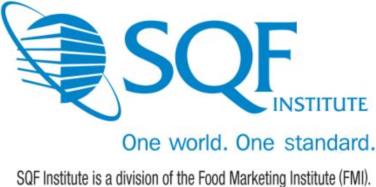REGULATIONS AND LABELING
Food laws are similar in concept throughout the world, each borrowing or copying each other. They differ in the color additives being regulated and the extent of control. Europe and the US are similar, and because most other countries accept products (and their color content) from the US, our review will highlight US regulations.
Several food and drug laws regulating color additives precede the 1960 Color Additive Amendment. This latter law places color additives into two groups:
1. Certified color additives (21 CFR Part 74)
2. Exempt from certication color additives (21 CFR Part 73)
The first group lists seven (7) synthetic FD&C colorants and two (2) for restricted use; all of which require certification of compliance with purity standards specified by FDA. This group of "certified colors" is more commonly known as artificial colors.
The second group contains twenty-six (26) color additives not requiring certification by FDA (i.e., color additives exempt from certification). These exempt-from-certification color additives are commonly known as “natural colors.” Thus the confusion: FDA has no “natural” category for color additives. In fact, FDA does not accept the concept of “natural vs. synthetic” colors at all; rather, FDA adheres to a "certified vs. exempt-from-certification" organization and requires all color additives to be made to the same standard of safety. Moreover, the addition of ANY color additive renders the finished product artificial … even if the color added is natural!
Labeling
In the US, the manufacturer has several labeling options for the product’s ingredient statement – both certified and exempt-from-certification colors can be declared generically as “artificial colors.” Since this dilutes the marketing punch sought by the use of “natural colors,” most manufacturers opt for one of the following labeling guides:
1. "color added"
2. "annatto (for color)" or "beet juice and turmeric (for color)" OR "color added (annatto)" or "colors added (beet juice and turmeric)"
3. "annatto" or "beet juice and turmeric"
Note that FDA does not recognize “natural colors.” Therefore, the word “natural” cannot be used in an ingredient declaration to modify a color additive. Stated more bluntly, never state "natural purple carrot juice" on your product's ingredient declaration; there is no "natural" purple carrot juice, there is only exempt-from-certification purple carrot juice! The law can be confusing and it is strongly recommended that you consult legal counsel for your product labeling. This review is for guidance only and should not be used as legal advice.
Future
The emphasis of almost all food regulations is safety. The European Union is moving towards the use of only color additives from natural sources. This may have a strong influence on supply and cost, as well as the ultimate US regulatory scheme in the future.












